Understanding the Risk Factors of Renal Cancer
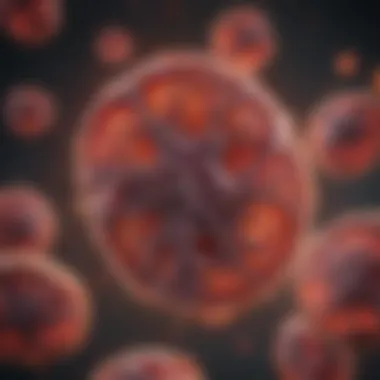
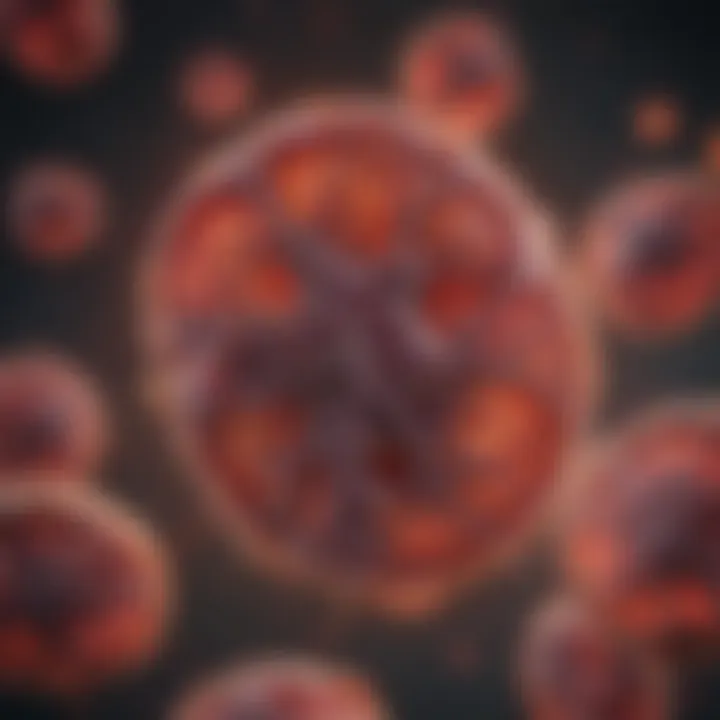
Intro
Renal cancer, a complex malignancy arising from the kidneys, stands as a significant concern within the medical community. As we peel back the layers of its multifactorial nature, we find that a multitude of risk factors play a pivotal role in its onset and progression. Understanding these factors—ranging from genetic predispositions to lifestyle choices—is vital for professionals and researchers seeking to mitigate risks and enhance preventive strategies. This analysis endeavors to elucidate the intricate web of risk factors associated with renal cancer, offering a nuanced perspective that is both comprehensive and accessible.
Background and Context
Overview of the Research Topic
The risk factors of renal cancer encompass a broad spectrum of influences. There’s the lurking presence of hereditary elements, often overlooked but crucial in the context of familial renal cancer syndromes. Environmental exposures, such as chemical pollutants and chronic kidney conditions, cannot be ignored either; they add layers to the risk assessment that is often too simplistic. The confluence of these factors makes studying renal cancer a venture that requires a multifaceted approach.
Historical Significance
Historically, renal cancer was often considered somewhat of a mystery. Early studies primarily focused on clinical presentation and treatment options, with less emphasis on understanding the underlying causes. As time marched forward, however, the medical community began to acknowledge the importance of risk factor exploration. This gradual shift led to a series of research initiatives that aimed to map out how genetics, environment, and lifestyle intertwine to influence renal cancer’s pathology.
"Understanding risk factors is pivotal not just for treatment, but for prevention strategies that can save lives."
Key Findings and Discussion
Major Results of the Study
The research around renal cancer risk factors unveils several striking truths. Numerous studies have pointed to obesity and hypertension as significant contributors. Additionally, smoking remains a consistently acknowledged risk factor. But what perhaps stands out more than anything else is the growing recognition of how genetic and environmental elements are inextricably linked in a complex dance.
Detailed Analysis of Findings
- Genetic Influences: Certain hereditary conditions, like von Hippel-Lindau disease, dramatically elevate the risk of renal cancer. Genome-wide association studies are increasingly spotlighting variants associated with heightened susceptibility.
- Environmental Factors: Exposure to specific chemicals—a notable example being trichloroethylene—has shown a correlation with increased renal cancer risk. Studies indicate that long-term exposure can alter kidney function and contribute to malignant transformation.
- Lifestyle Choices: The role of lifestyle cannot be overstated. Factors such as diet high in processed foods, lack of physical activity, and smoking have established strong connections to renal cancer onset.
- Emerging Research: The interplay of hormonal and immunological factors is being investigated as part of a wider understanding of renal cancer risks. As research progresses, it’s clear that lifestyle changes may be essential adjuncts to traditional preventive strategies.
The implications of these findings underscore the importance of a holistic view when approaching renal health. Each factor, whether genetic or environmental, weaves into the fabric of individual risk profiles, and targeting them could ultimately transform patient outcomes.
Understanding Renal Cancer
Understanding renal cancer is paramount for grasping the myriad risk factors associated with this complex disease. The nuances of renal cancer, its origins, and pathways are critical for healthcare professionals and researchers aiming to develop effective strategies for prevention and treatment. By diving into the fundamentals of renal cancer, one can appreciate how various intrinsic and extrinsic elements interweave to influence disease progression. Insight into these fundamental concepts lays the groundwork for discussing more intricate risk factors that may modify cancer susceptibility.
Definition and Overview
Renal cancer primarily refers to malignancies that arise in the kidneys, the bean-shaped organs essential for filtering blood and producing urine. While there can be several subtypes of kidney cancer, the most prevalent one is renal cell carcinoma (RCC).
RCC, accounting for roughly 90% of all renal cancers, seems to emerge predominantly in older adults, although increasing incidences have been observed even in younger populations. Individuals often do not show symptoms in the primary stages of the disease, complicating early diagnosis. Symptoms such as hematuria (blood in urine), flank pain, and unexplained weight loss manifest as the disease advances. The prognosis can range widely; this variance is influenced by factors like cancer subtype, stage at diagnosis, and patient characteristics.
Types of Renal Carcinoma
The various forms of renal carcinoma significantly impact both treatment approaches and patient prognosis. Identifying these types is crucial in tailoring appropriate management plans and understanding the underlying mechanisms driving tumor development.
Clear Cell Carcinoma
Clear Cell Carcinoma is the most common subtype of renal cell carcinoma, constituting nearly 70-80% of all RCC cases. The hallmark feature of this cancer type is the presence of clear cells, which distinguish it histologically.
This subtype is particularly noteworthy due to its association with mutations in the VHL gene, which plays a role in oxygen-sensing pathways. With a well-defined molecular basis, Clear Cell Carcinoma provides a rich ground for research into targeted therapies. However, it may also be known for its aggressive behavior and propensity to metastasize, making early detection critical for better outcomes.
Papillary Carcinoma
Papillary Carcinoma accounts for about 10-15% of renal cancers. This variant is characterized by its papillary architecture and often arises in a background of hereditary syndromes. It can be classified into type 1 and type 2, which exhibit different growth patterns and prognostic implications. Understanding the subtype helps in predicting disease behavior and guiding therapy decisions.
The unique feature of Papillary Carcinoma is its relative resistance to certain therapies. This can pose challenges for clinical management, making it a significant focus within renal cancer research.
Chromophobe Carcinoma
Chromophobe Carcinoma is a less common, distinctive subtype that constitutes about 5% of renal cell cancers. Its unique aspect is derived from the appearance of the cancer cells under the microscope, which show a characteristic "frothy" staining pattern.
Although Chromophobe Carcinoma usually has a better prognosis than Clear Cell or Papillary variants, early diagnosis remains pivotal. Its treatment options differ from other types, often requiring tailored approaches. Knowledge of this subtype enhances the understanding of renal cancer heterogeneity and informs clinical practice.
"The landscape of renal cancer is complex and nuanced, requiring a comprehensive understanding of its various forms to effectively manage patient outcomes."
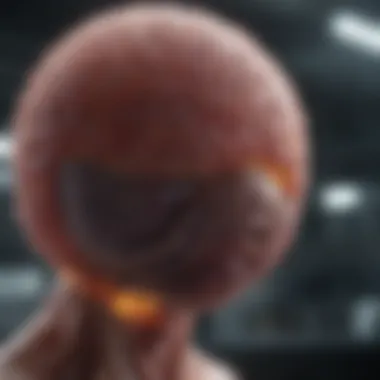

In summary, a detailed understanding of renal cancer, particularly its subtypes, is essential for risk assessment, treatment planning, and overall patient care.
Genetic Risk Factors
The genetic risk factors of renal cancer are crucial in understanding the intricate web of influences that lead to this disease. Genetics can provide insights not just into susceptibility, but also into potential pathways of disease development. Identifying these risk factors can enable early interventions and targeted treatments, highlighting their importance. Moreover, understanding these genetic links helps healthcare professionals strategize better surveillance for those at high risk.
Inherited Genetic Mutations
Von Hippel-Lindau Disease
Von Hippel-Lindau Disease (VHL) stands out as a significant genetic risk factor for renal cancer. Essentially, VHL is a hereditary condition that usually manifests in early adulthood. The key characteristic of this disorder is its impact on tumor formation: individuals have a heightened risk of developing various tumors, including renal cell carcinoma.
What's compelling about VHL in the context of renal cancer is how it exemplifies the interplay between genetics and environmental factors. Many individuals with VHL may lead completely normal lives until they face symptoms related to tumor growth. This makes VHL an informative case study in understanding renal cancer's pathology.
One unique feature of VHL is the presence of multiple tumor types that can arise from it, not just in the kidneys but also in other areas of the body. This multifaceted risk exposure provides a richer landscape for research, making it a popular theme in the study of hereditary renal cancer. The disadvantage, however, lies in the lifelong implications for those diagnosed; regular monitoring and treatments can be burdensome.
Hereditary Leiomyomatosis and Renal Cell Carcinoma
Hereditary Leiomyomatosis and Renal Cell Carcinoma (HLRCC) presents another genetic dimension to renal cancer risk. This condition is often overlooked, yet it holds critical relevance. The key characteristic of HLRCC is its association with a distinct form of renal cancer that often appears in younger populations.
One beneficial aspect of HLRCC's inclusion in this article is its rarity and the specificness of its associated tumors. Researchers are still unraveling the full effects of this genetic mutation, which makes it a hot topic for emerging studies. The unique feature about HLRCC is the link to cutaneous leiomyomas, which are benign tumors and serve as an early warning sign for future renal cancer risk.
However, the focus on HLRCC comes with its disadvantages. Many patients may not recognize the signs or associate them with renal risks, leading to late diagnoses. Awareness and education are key here, advocating for closer examination among families known to carry the mutation.
Familial Clustering
Familial clustering describes the phenomenon where certain families experience a higher incidence of renal cancer. This aspect often prompts further investigations into genetic predispositions. The presence of familial clusters indicates that genetic factors play a substantial role alongside environmental influences.
Contrary to one-size-fits-all understanding, familial clustering emphasizes the need for personalized approaches in monitoring at-risk individuals. Often, it compels families to engage in genetic counseling and to consider genetic testing. Notably, families with direct histories of renal cancer have an increased encouragement to engage in proactive health measures, further emphasizing the importance of understanding both genetic and familial components.
This area warrants significant attention considering the implications for public health policies and screening recommendations. By enhancing awareness, we can promote targeted strategies, potentially leading to earlier diagnoses and better patient outcomes.
Environmental Influencers
Understanding the role of environmental influencers is crucial when analyzing the risk factors associated with renal cancer. These external factors, encompassing both chemical exposures and radiation, can contribute significantly to the development of the disease.
Environmental factors do not act in isolation; they interplay with genetic predispositions to create a complex risk profile. Awareness of these elements is imperative for healthcare professionals and researchers, as they highlight how prevention strategies can be adopted. For individuals who are at a higher risk, knowing about these exposures could lead to actionable changes in lifestyle or environment.
Moreover, exploring environmental factors can unveil hidden patterns or correlations that may otherwise go unnoticed. This knowledge serves not only as a preventive measure but also enhances the understanding of renal cancer itself, allowing for more informed approaches to treatment.
Chemical Exposures
Chemical exposures are among the most studied environmental influences in relation to renal cancer. They raise critical questions about public safety, occupational hazards, and the long-term implications of exposure to specific substances. A few of the prominent chemicals known to increase risk include asbestos and benzene.
Asbestos
Asbestos is a naturally occurring mineral that was widely used in construction and insulation materials due to its fire-resistant properties. Its significance lies in its carcinogenic potential, particularly in relation to various types of cancer, including renal cancer.
One of the key characteristics of asbestos is its ability to fibrously permeate tissues, leading to inflammation and scarring. This isolation adds a layer of danger; particles can linger for a long time, introducing prolonged exposure risk. Notably, workers in construction or those involved in manufacturing likely need to be more careful of exposure.
Although asbestos is now regulated in many places, it still presents a historical risk, especially in older buildings. The unique nature of asbestos, made of fine, needle-like fibers, provides a clear disadvantage: once inhaled or ingested, it becomes a challenge to remove from the body. This persistent characteristic can escalate the chances of developing renal cancer later in life.
Benzene and Other Carcinogens
Benzene, a widely recognized chemical used in various industrial processes, also poses a significant risk when discussing renal cancer. Its primary attribute of being an aromatic hydrocarbon renders it particularly hazardous, as it can disrupt cellular processes.
The key characteristic of benzene is its prevalence in products like gasoline, solvents, and cigarettes, making it a common environmental contaminant. This widespread occurrence makes it a prime focus for researchers seeking to link chemical exposure to renal cancer.
The unique feature of benzene is its association with several other carcinogens as well, enhancing the need for vigilance. Regular exposure, particularly in occupational settings or areas with heavy traffic, can increase the risk of developing renal cancer in vulnerable populations. The potential advantages of minimizing benzene exposure include:
- Improved air quality
- Reduced cancer incidence
- Enhanced public health outcomes


Radiation Exposure
Radiation exposure is another critical environmental factor that has been linked to renal cancer. Notably, this exposure can stem from two main sources: natural background radiation and artificial sources like medical imaging (X-rays, CT scans).
Natural radiation, while a part of daily life, can accumulate over time in individuals with frequent exposure to certain occupations, such as those in medical fields or nuclear industries. The concern surrounding diagnostic imaging is particularly relevant today, as medical advancements continue to rely on imaging technologies, balancing the diagnostic benefits against potential long-term risks.
The relationship between radiation exposure and cancer development, including renal cancer, invites ongoing study and debate. Increasing awareness about minimizing unnecessary radiation exposure during medical procedures is essential in striving to reduce long-term cancer risks.
"Understanding and mitigating environmental risk factors is not just about knowledge; it's about proactive measures to protect our health and future generations."
By examining environmental influences in this manner, we can better comprehend individual risk and potential preventive strategies against renal cancer.
Lifestyle Factors
In the discussion of renal cancer risk, lifestyle factors are pivotal. These day-to-day choices and habits can dramatically shape one's health trajectory. The significance of understanding lifestyle factors in relation to renal cancer is paramount; they represent modifiable influences that could be targeted for preventive measures. It’s not just what one inherits genetically, but also how one lives that matters.
Smoking
The link between smoking and renal cancer is established in various studies, suggesting that tobacco use is a notable risk factor. It's not just the act but the long-term exposure to harmful chemicals in cigarettes that insidiously elevate the chances of developing kidney tumors. The particulates, tar, and carcinogenic compounds in cigarette smoke can cascade into cellular changes leading to malignancies.
According to data from health organizations, smokers have a significantly higher risk of renal cell carcinoma compared to non-smokers. A quote from a recent study underscores this point:
"Smoke carries over 7,000 chemicals, many of which are known carcinogens, thus doubling the risk of renal cancer among long-term smokers."
Changing this lifestyle habit can yield substantial benefits, not just in reducing the likelihood of kidney cancer but also in improving overall health.
Obesity
Obesity stands as another crucial player in the risk landscape of renal cancer. The relationship is multifaceted, rooted in biological mechanisms and inflammatory processes associated with excess weight. Extra body fat is not merely a number on a scale; it triggers a cascade of metabolic changes, increase in hormones such as insulin, and altered immune responses.
Particularly, visceral fat, the kind that wraps around internal organs, can lead to increased levels of inflammatory markers. This chronic inflammation is a breeding ground for cancerous cells. The American Cancer Society highlights that being overweight or obese can increase the risk of various cancers, and renal cancer is notably among them. Individuals with a BMI of 30 or higher are at greater risk, suggesting lifestyle modifications, such as adopting healthier eating habits and increasing physical activity, can be effective preventive actions.
Physical Activity
Physical activity, or the lack thereof, plays a pivotal role in cancer prevention and is closely tied to both obesity and overall health. Regular exercise helps maintain a healthy weight, reduces inflammation, and may enhance immune function. Specifically, engaging in moderate to vigorous physical activity can lower hormone levels associated with renal cancer, including insulin and estrogen, creating a less favorable environment for cancer development.
Emerging research also suggests that physical inactivity correlates with an uptick in renal cancer risk. When individuals lead a sedentary life, the body becomes an incubator for various health issues, including obesity, which is already linked to higher cancer risk.
Incorporating activities like walking, swimming, or even yoga into daily routines can boost health outcomes significantly. A balanced combination of diet and regular physical exercise not only plays a defensive role against cancer but also enhances quality of life.
Ultimately, addressing these lifestyle factors can be a key strategy in reducing renal cancer risk. Making conscious dietary choices, quitting smoking, and adding exercise to daily routines represents actionable steps individuals can take towards better health.
Demographic Considerations
Demographics play a pivotal role in understanding the risk factors associated with renal cancer. Analyzing demographic characteristics allows researchers and healthcare providers to pinpoint patterns and trends within different populations. It opens the door to targeted prevention strategies and tailored therapies, which can significantly enhance patient outcomes. By focusing on the age, gender, and ethnicity of renal cancer patients, we can derive crucial insights that drive deeper investigations into this complex disease.
Age
The relationship between age and renal cancer is noteworthy, as it sheds light on how risk accumulates over one's lifetime. Generally, the incidence of renal cancer increases with age. Most cases are diagnosed in individuals over the age of 60. This suggests that age-related factors, such as accumulated environmental exposures and age-related molecular changes, may contribute to the development of the disease.
It's pertinent to realize that age impacts not just the likelihood of developing renal cancer but also the aggressiveness of the disease. Older patients often present with more advanced stages at the time of diagnosis compared to younger individuals, indicating a potential delay in recognition or screening in this age group.
To synthesize:
- Most renal cancer cases occur in older adults
- Age is linked to disease aggressiveness
- Accumulation of risk factors over time
Gender
Gender disparities present an intriguing aspect of renal cancer epidemiology. Statistically, males are more likely to develop renal cancer when compared to females, with studies indicating a ratio of about 2:1. Various factors contribute to this observed difference, including hormonal influences, lifestyle choices, and biological distinctions. For instance, testosterone has been suggested to play a role in kidney tumor biology, and smoking rates—historically higher in men—also contribute to increased risk among male populations.
In light of these findings, it is crucial for public health strategies to take gender into account. Targeted prevention campaigns focusing on smoking cessation, especially among at-risk male populations, could prove beneficial. Conclusively, gender not only influences the likelihood of developing the disease but also affects treatment approaches and outcomes.
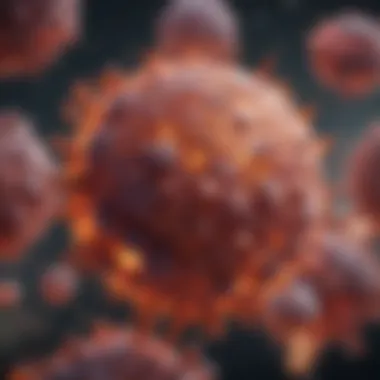
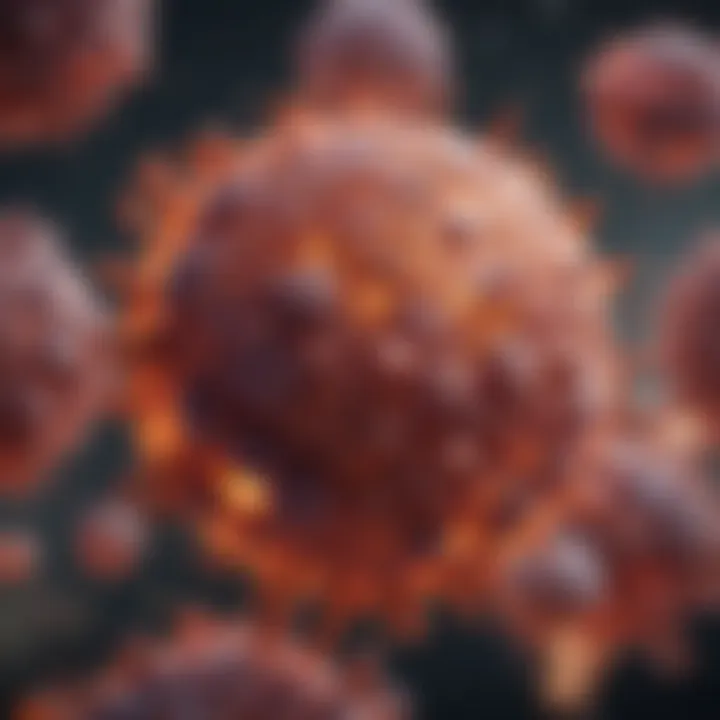
Ethnicity
Ethnic background can significantly affect renal cancer risk, with clear variations noted across different populations. Research indicates that African American individuals have a higher incidence of renal cancer compared to Caucasians and Hispanic individuals. This may be attributed to various factors, including genetic predispositions, socioeconomic conditions, and access to healthcare services.
Moreover, the severity and prognosis of renal cancer can differ across ethnic groups. Some studies have suggested that certain ethnicities may present with more aggressive forms of the disease, impacting treatment options and outcomes.
Key points regarding ethnicity:
- Disparities in incidence rates
- Higher risk among African Americans
- Possible genetic and social determinants
Pre-existing Medical Conditions
Understanding pre-existing medical conditions is crucial when discussing the risk factors associated with renal cancer. The interplay between these conditions and the development of renal cancer offers insights into how certain health issues may predispose individuals to this serious disease. Recognizing the significance of chronic conditions can lead to better prevention strategies and improved patient outcomes. Here’s an in-depth look at how specific pre-existing medical conditions influence the risk of renal cancer.
Chronic Kidney Disease
Chronic Kidney Disease (CKD) is notably important in the context of renal cancer. As kidneys become less effective over time, the risk of developing malignancies within them may increase. Patients with CKD often undergo abnormal metabolic processes that can contribute to tumorigenesis—the formation of tumors.
Additionally, factors like accumulated toxins in the bloodstream, which typically are filtered out by healthy kidneys, can lead to further complications. This can create an environment that is hospitable for cancerous growths, mainly because normal kidney function helps to regulate blood pressure and filter out waste products.
It’s essential for healthcare providers to closely monitor CKD patients, emphasizing the importance of regular screenings tailored towards detecting renal cancer at earlier stages. This proactive approach can be vital in improving survival rates.
Hypertension
Hypertension, or high blood pressure, stands out as another formidable risk factor for renal cancer. This condition affects a significant portion of the global population and can directly impact kidney health. Evidence suggests that individuals with chronic hypertension are at a higher risk for developing renal cancer compared to their normotensive counterparts.
The connection between hypertension and renal cancer may lie in the cascading effects of increased blood pressure on renal vasculature. High levels of pressure can cause damage to blood vessels over time, leading to ischemia—a reduction in blood flow. This reduction can encourage the development of renal tumors due to cell stress and subsequent genetic alterations.
Moreover, people with hypertension frequently experience changes in metabolic profiles, which may further contribute to their vulnerability to this type of cancer. Awareness and management of blood pressure could provide a valuable opportunity for risk reduction.
Diabetes Mellitus
Diabetes Mellitus appears to be intricately linked to the risk of renal cancer as well. Individuals living with diabetes often exhibit a range of metabolic abnormalities, which can heighten their risk of not just renal, but also various other types of cancer. Insulin resistance and chronic inflammation associated with diabetes may create a biological environment conducive to the proliferation of malignant cells.
Studies highlight that those with type 2 diabetes, in particular, show increased incidence rates of renal cancer. The underlying mechanisms could involve hyperglycemia's impact on cellular processes, including accelerated tumor growth.
Given the alarming rates of diabetes worldwide, educating patients about this connection can empower them to take preventive actions, such as lifestyle modifications aimed at maintaining healthy glucose levels. Regular kidney exanimations and cancer screenings can also prove helpful in their ongoing healthcare management.
People with pre-existing medical conditions like CKD, hypertension, and diabetes mellitus should be vigilant about their kidney health and explore regular check-ups that focus on early detection of renal cancer.
In summary, recognizing these pre-existing medical conditions allows healthcare professionals to address renal cancer risk proactively. By understanding the interconnected risks, individuals can engage in informed discussions with their healthcare providers, paving the way for better health outcomes.
Emerging Research and Trends
Emerging research in the context of renal cancer presents a promising avenue for expanding our understanding of the disease. It encompasses both innovative approaches and novel findings that could reshape prevention, diagnosis, and treatment strategies. This section aims to highlight the significance of keeping abreast with the latest developments, emphasizing the roles that immunological factors and hormonal influences may play in renal cancer. These insights are particularly vital as they offer new perspectives and potential interventions that could improve patient outcomes.
Immunological Factors
The immune system's interaction with cancer is a burgeoning field of study, particularly concerning renal cancer. Understanding how the immune response manipulates renal carcinoma could lead to personalized immunotherapies that harness the body's defense mechanisms against tumors.
Recent studies have identified specific immune cells, like T-cells, that may be pivotal in recognizing and attacking renal cancer cells. The presence of certain markers can indicate the body's readiness to mount a response. Researchers are now experimenting with techniques to boost this immune surveillance system.
For example, the application of checkpoint inhibitors has shown potential in reactivating T-cells that might be suppressed in tumor environments. This approach has opened doors for treatments that can extend survival rates for patients whose cancers may have been resistant to traditional therapies.
Additionally, it’s being investigated how different immunogenic profiles might affect cancer dissemination. Some cuttings edge studies are even examining how prior infections could influence immune readiness against renal cancer, suggesting that an individual’s health narrative could shape their cancer susceptibility.
"Harnessing the power of the immune system represents a key shift in how we tackle cancers, including renal cancer."
Hormonal Influences
Hormonal dynamics are gaining attention as researchers delve deeper into renal cancer's risk landscape. Hormones can affect cellular growth and differentiation, presenting a double-edge sword when it comes to cancer risk. One area of focus is the role of androgens and estrogens, which might influence the proliferation of renal cells in both men and women.
Certain studies have hinted at a link between hormonal therapies used in other conditions, such as prostate cancer, and their potential impact on renal tumor development. Understanding how these hormonal treatments interact with renal tissues is critical. In women, for instance, fluctuations in hormonal levels during menstrual cycles or menopause could modulate risks, presenting diverse avenues for prevention strategies.
The connection between obesity and hormonal imbalances also presents intriguing questions. Excess body fat can alter hormone levels, exacerbating risks for conditions like diabetes and arguably, renal cancers too. Thus, further exploration of hormonal influences on renal cancer could pave the way for targeted interventions.
In summary, the emerging research around immunological and hormonal factors in renal cancer is rich with potential to inform new screening strategies and therapies. Staying ahead of these trends could lead healthcare providers and patients to better understand how to navigate the complexities surrounding renal cancer risk. This approach not only enhances current knowledge but lays down groundwork for future studies seeking to elucidate these intricate relationships.







